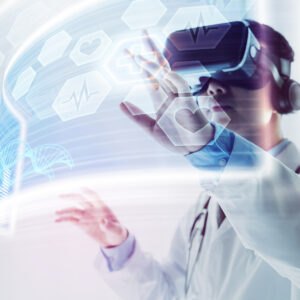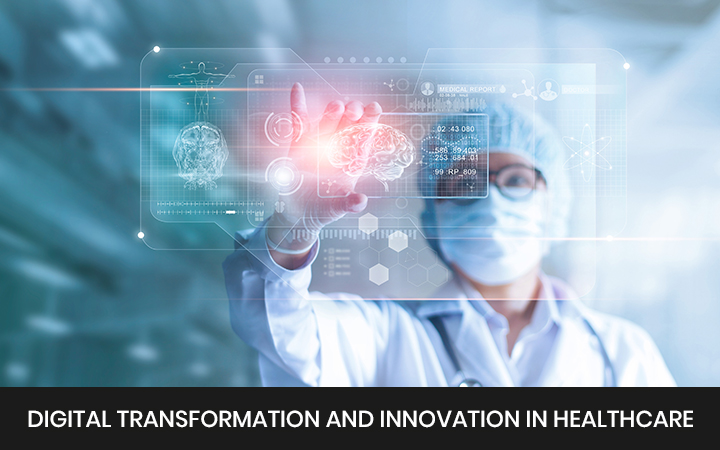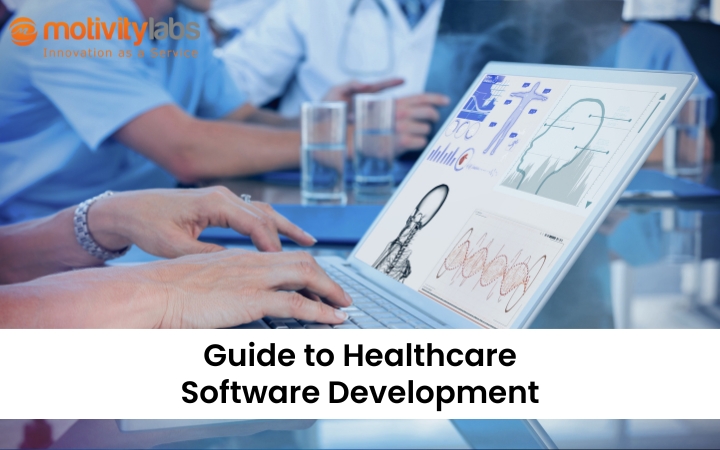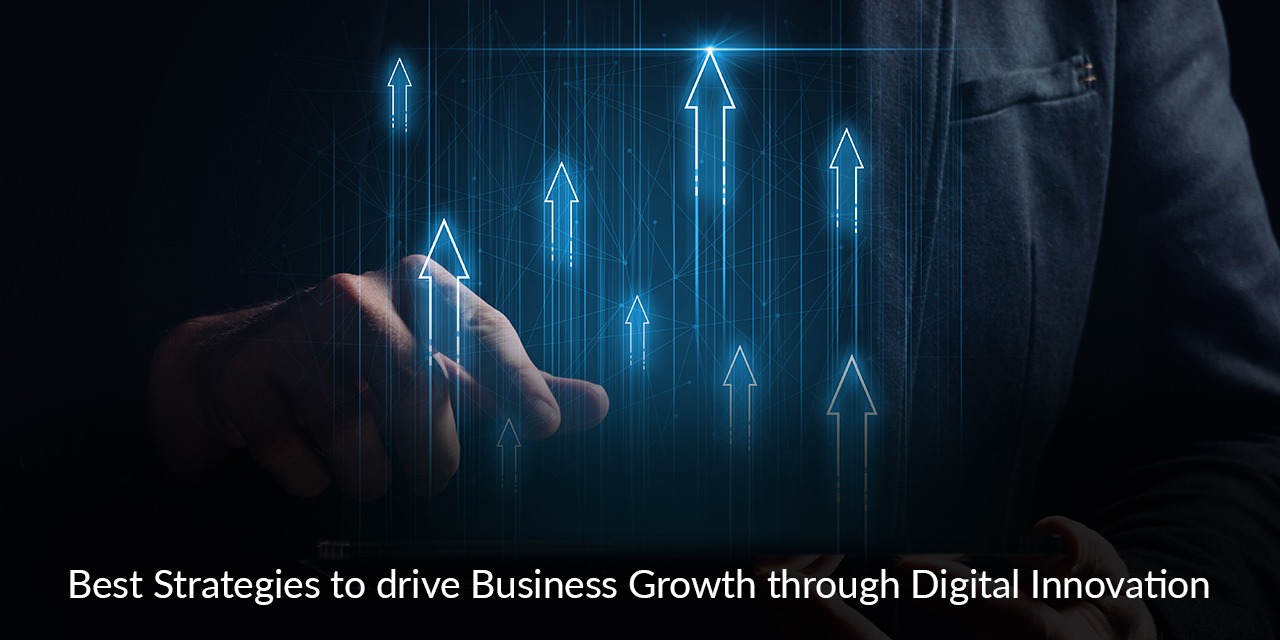Digital transformation in healthcare refers to the use of emerging technologies, methods, processes, and practices that are aimed at improving overall service to patients that is sustainable, streamlining various processes for healthcare professionals, and ease of doing business for healthcare organizations. Digital transformation in healthcare helps innovative healthcare service providers immensely by offering various means to focus on delivering trusted services fast and on time, with a better user experience. Post covid-19, IT services for healthcare have undergone a tremendous disruption, and various new healthcare technology trends have emerged as a result. While it is true that some of these technologies in the medical field existed before, the pandemic has only accelerated their usage and prominence. Let’s see some of the breakthroughs of digital transformation in healthcare in recent times.
Telemedicine:
Telemedicine is one of the fastest-growing healthcare technology trends right now. Before the pandemic, the usual procedure with the doctor when you fell ill would be to first take a doctor’s appointment, followed by prescribed lab tests to diagnose the illness, again followed by another doctor’s appointment to study the lab results, evaluate the situation, and suggest a course of action. All this would take at least a week and in some cases, this time factor may prove critical in the prognosis. Due to restricted movement, telemedicine and virtual consultation have gained momentum during the pandemic, and even after the pandemic, this trend is here to stay because of its numerous benefits. A telemedicine procedure is one in which healthcare services are provided via electronic and telecommunication technologies. It allows patients to remotely access their healthcare providers for consultation, diagnosis, advice, various reminders, and monitoring. People from remote areas where there are no healthcare facilities, people who can’t visit hospitals for various reasons like restricted mobility, and people with busy work schedules can opt for telemedicine.
One can choose his choice of service or a consultant using various telemedicine apps and can fix an appointment for a virtual visit at a time convenient to the user. The healthcare provider would “see” the patient through various available electronic modes such as video call or voice call, would assess the situation, and suggest further courses of action. The patient can visit the doctor in person only when it is necessary.

There are numerous benefits of telemedicine for both doctors and patients. The doctors can screen more patients in less time and can monitor the health condition of bedridden patients or patients with mobility issues. As regards the patients, they can save a lot of time as they need not wait in queue for their turn at the doctor’s place and can fix an appointment with a professional of choice via a telemedicine app designed by various innovative healthcare service providers in the market. It is observed through various surveys that more and more people are inclined to use telemedicine.
Internet of Medical Things, IoMT:

Another healthcare technology trend that has gained much popularity after the pandemic is IoMT devices. The Internet of Medical Things is the collection of medical devices that are connected to the Internet for their functionality most of the time. They are usually connected to healthcare IT networks and they help track patients’ health continuously remotely which can reduce hospital visits and the associated costs considerably. IoMT devices equipped with sensors and wearables can help monitor patients in real time and assist doctors in immediately getting the necessary medical aid.
Wearable IoMT devices like smartwatches and health bands are one of the most innovative healthcare service providers that can keep track of various health parameters such as heart rate, oxygen levels, blood pressure, blood glucose levels, and heart rate. Some even have a mechanism to alert near and dear or a doctor when the readings fall/cross danger levels. These devices are particularly helpful for elderly patients who need continuous monitoring.
IoMT devices such as connected ambulances can help prepare the hospital even before the patient arrives so that the patient gets immediate medical attention when he arrives at the hospital. This is done by sharing the patient data and health statistics with the hospital from the ambulance itself as it is connected. This facility is particularly helpful in case of accidents where the victims lose so much blood and the hospital can be ready with the patient’s blood type soon as he arrives. Even for Insurance companies, the data from IoMT devices can help in risk assessment and claim management.
Artificial Intelligence, AI:
Artificial Intelligence is omnipresent nowadays in every field and the healthcare sector is not left behind. IT services for healthcare have improved tremendously over the last decade adapting to every new emerging technology and AI is one of the most profound technologies that is bringing revolutionary digital transformation in the healthcare sector. From doing mundane tasks for humans at a high speed to risk assessment during a pandemic, assisting doctors in critical surgeries, and speeding up clinical trials for vaccines, AI can do many things and can even learn to do better over time!
AI can help in pathology by comparing thousands of images, x-rays, and other diagnostic data and can predict and pinpoint the exact cause, the extent of damage caused by a tumor/cancer, or any other developmental diseases that can greatly help in diagnosis and treatment. Errors in diagnosing a disease by a medical professional can prove fatal sometimes and AI, together with deep learning, can predict and diagnose deadly diseases more accurately and in a shorter period than their human counterparts saving a lot of valuable time which is a crucial factor in such cases.

Electronic health records, EHRs of patients collect large amounts of data. This data can be analyzed using AI, which can provide various insights for arriving at a decision and help doctors treat patients better.
AI-powered chatbots can be used by healthcare providers to ease some of the traffic at healthcare centers for attending to patients with the most common questions. These queries can be for symptoms, doctor appointments, quick fixes, insurance claims, documents required, etc.
Big Data:
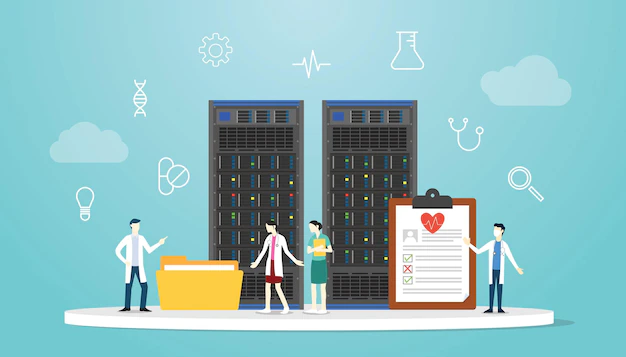
Hospitals gather large amounts of data through EHRs, lab results, pathological reports, image data, pharmacy, and other related patient data. This data when analyzed using AI and other techniques can work wonders in the healthcare industry. The data-driven insights from big data help in assessing the extent of an outbreak, avoiding disease spread, helping in predictive analysis, lessening medication errors, and reducing costs for treatment by predicting the disease. Big data can even help in administrative functions such as allocating staff based on admissions.
Virtual Reality, VR:
Virtual reality is one of the best IT services for healthcare in recent times. Virtual reality in healthcare help both patients and medical professionals interact with simulated environments for pain relief, rehabilitation, and surgery training. For medical students and healthcare professionals, VR is a better way to learn about anatomy and various medical practices than the traditional way. VR can be used for the simulation of various medical procedures, medical equipment training, surgical training, pain relief, certain cognitive and neurological rehabilitation, and physical therapy.
